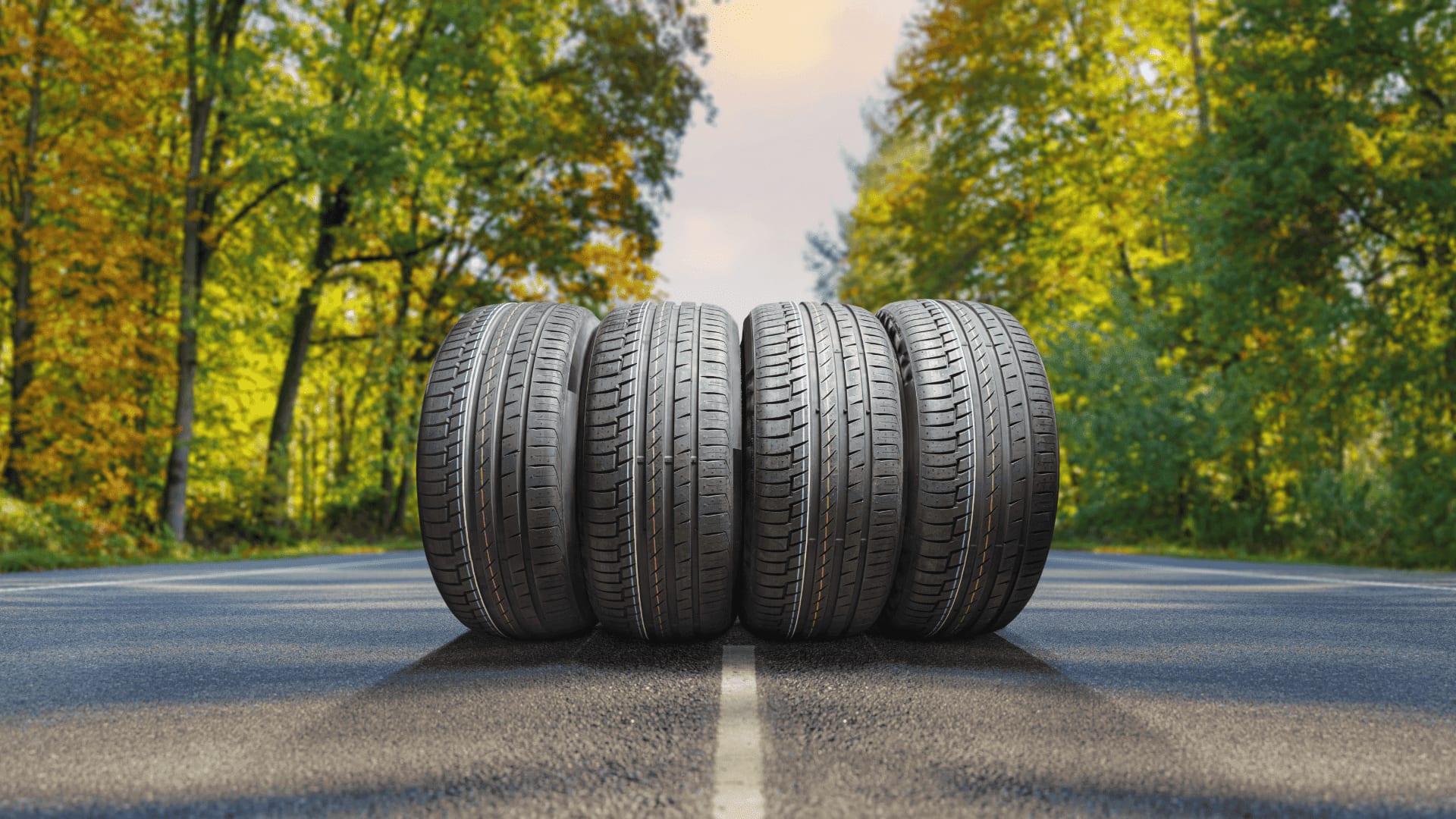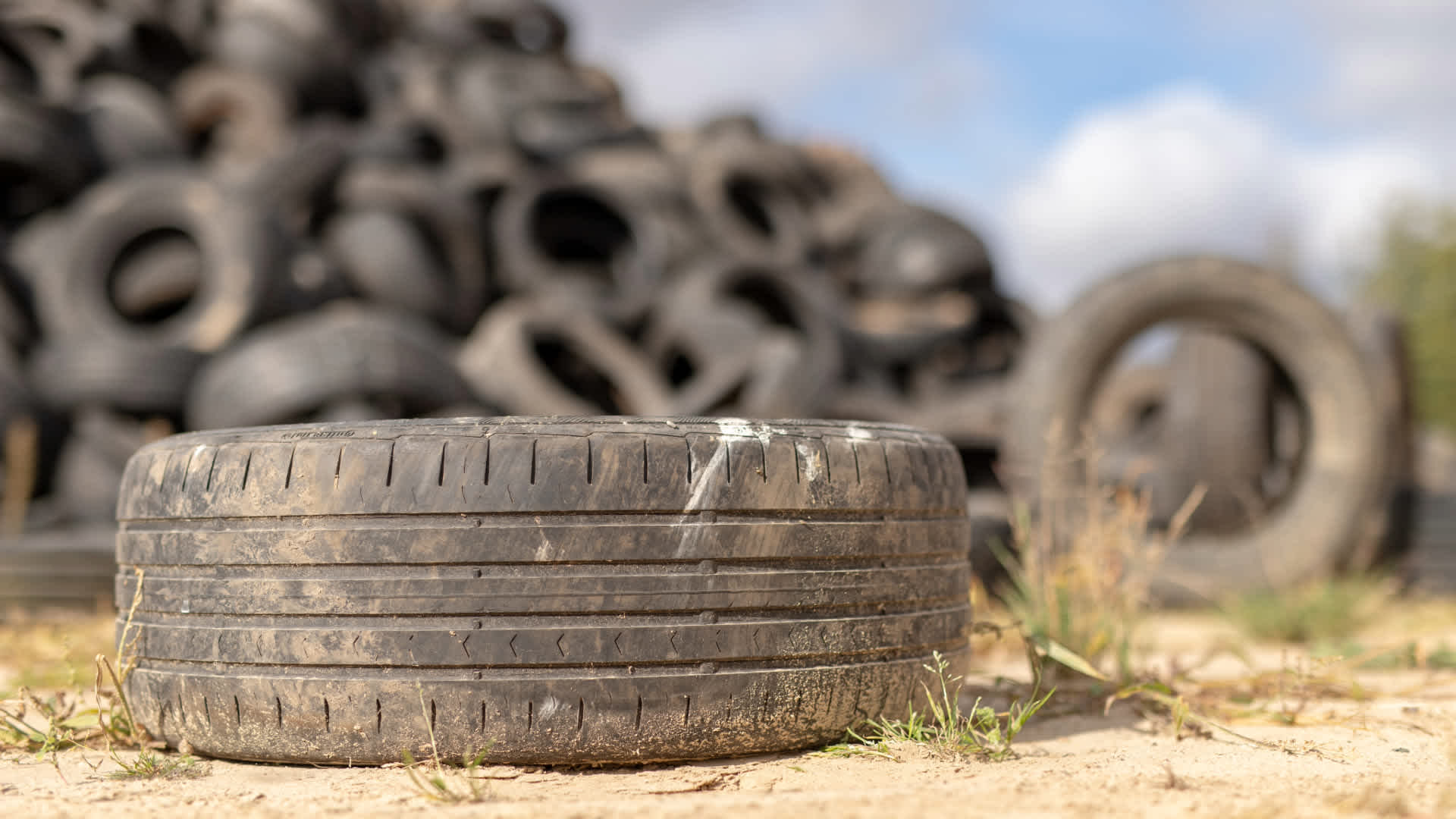Tire maintenance & safety
Best price guarantee
Tire replacement coverage
24/7 roadside assistance
Easy returns

Your tires are the only part of your car that touches the road, making them a big deal regarding your safety and how your vehicle handles. Despite their importance, it’s easy to forget about tire maintenance until something goes wrong.
Worn or damaged tires can lead to many issues, like reduced traction, lower fuel efficiency, or, in more serious cases, blowouts and accidents. That’s why it’s important to watch them and know when it’s time for a replacement.
In this article, we’ll review five clear signs that your tires might need replacing. With a few simple checks, you can ensure your car is riding on safe, reliable tires and ready for the road ahead.
What is the Penny Test for Tire Tread Depth?
The penny test is a simple, budget-friendly way to check if your tire tread is safe. Tread depth plays a big role in how well your car grips the road, especially in rain or slippery conditions, so it’s worth watching.
Here’s how to do it:
- Grab a penny and place it into one of the grooves in your tire with Lincoln’s head facing down and toward you.
- If you can see all of Lincoln’s head, that means your tread is worn down to 2/32" or less, which is below the recommended minimum. That’s a good sign, it’s time to start shopping for new tires.
- Check several spots across each tire and repeat the process for all four tires. This helps you spot uneven wear, which could point to other issues like alignment problems.
Remember that while the penny test is a handy trick, it’s not a replacement for a professional inspection. You should replace your tires to stay safe once they’re down to 2/32". Driving on the worn-out tread can lead to poor traction, longer stopping distances, and a higher risk of hydroplaning, especially in bad weather.
Another tip: look for the built-in wear bars in your tire grooves. If the tread is level with those bars, it’s time for a new set. Regularly checking your tires and replacing them when needed is one of the easiest ways to make sure your vehicle stays safe and performs the way it should.
Are There Cracks, Cuts, or Bulges on Your Tire Sidewalls?
It’s easy to forget about your tires until something goes wrong, but taking a minute to check your tire sidewalls for damage can go a long way toward keeping you safe on the road. Cracks, cuts, or bulges might seem small, but they can signal bigger issues that could lead to a tire failure when you least expect it.
These problems often happen after hitting curbs, potholes, or road debris, which puts extra stress on your tires. Cracks could mean the rubber is aging or starting to break down, especially if your tires have been on the car for a few years. Bulges, on the other hand, are more serious; they’re usually caused by damage inside the tire, where the air has pushed through the layers and created a weak spot. That damage can lead to a sudden blowout, the last thing you want while driving.
If you notice any of these warning signs, don’t wait; have a tire professional take a look. They’ll be able to tell you if the tire needs to be replaced or if it’s still safe to use. Catching these issues early protects your safety and gives you peace of mind every time you hit the road.
Is Your Tire Pressure Light Constantly Turning On?
If your tire pressure monitoring system (TPMS) light keeps popping on, it’s usually a sign that something’s not quite right. It could mean your tires are underinflated or have a slow leak somewhere. Either way, it’s not something to ignore; driving with low tire pressure can lead to uneven wear, affect your car's handling, and even cause you to burn more fuel than necessary.
Underinflated tires create more rolling resistance, which makes your car work harder and can raise the tire’s temperature. Over time, that extra heat can break down the tire’s structure and increase blowout risk. Plus, low pressure can make your vehicle harder to control, especially in bad weather, something no driver wants to deal with.
If your TPMS light stays on even after topping off your tires, having a professional check things out is a good idea. There could be a small puncture, a faulty valve stem, or some internal damage that’s not visible outside. Getting it looked at ensures your tires stay in good shape and keeps you safer on the road.
Are You Experiencing Shaking or Vibrating When Driving?
If you start feeling odd vibrations while you’re driving, whether it’s through the steering wheel or your seat, it could be your car’s way of telling you something’s wrong with your tires. These vibrations often mean internal damage, like a shifted belt or weakened cords, which can happen after hitting a pothole, curb, or other rough patch in the road.
It might be tempting to ignore it, especially if the car still seems to drive fine, but letting it go can lead to bigger (and more dangerous) problems. Internal tire damage can throw off your car’s balance and stability, increasing the risk of a blowout or losing control, especially at higher speeds or during sudden stops.
That’s why it’s smart to get it checked out when you notice something feels off. A professional can help figure out whether the issue is tire-related or something else, like your suspension system. Staying on top of strange vibrations and other warning signs is important to keeping your car safe and road-ready. A little attention now can save you from major trouble later.
Have Your Tires Reached Their Age Limit?

Tires don’t last forever, even if the tread still looks good. Over time, the materials inside a tire break down due to exposure to sunlight, heat, and everyday wear. As tires age, they become more prone to failure, so it’s important to pay attention to tread depth and how old your tires are.
To check the age of your tires, look for the DOT code on the sidewall. The last four digits tell you when the tire was made. For example, a code that ends in “2518” means the tire was manufactured in the 25th week of 2018. Regularly inspecting tires is a good idea once tires hit the 6-year mark. If they’re getting close to 10 years old, it’s usually time for a replacement, even if there’s still tread left.
Replacing older tires helps ensure your car handles well and stays safe, especially when driving in tough conditions or carrying heavy loads. As tires age, they just don’t perform as they used to.
Keeping an eye on your tires and knowing when it’s time for new ones is one of the easiest ways to protect your vehicle and everyone in it. If you’ve spotted any signs that your tires may be past their prime, we’re here to help. At SimpleTire, you can shop online, find the right tires at great prices, and get back on the road confidently from the comfort of your home.
Ready to find the perfect tires?
Search By